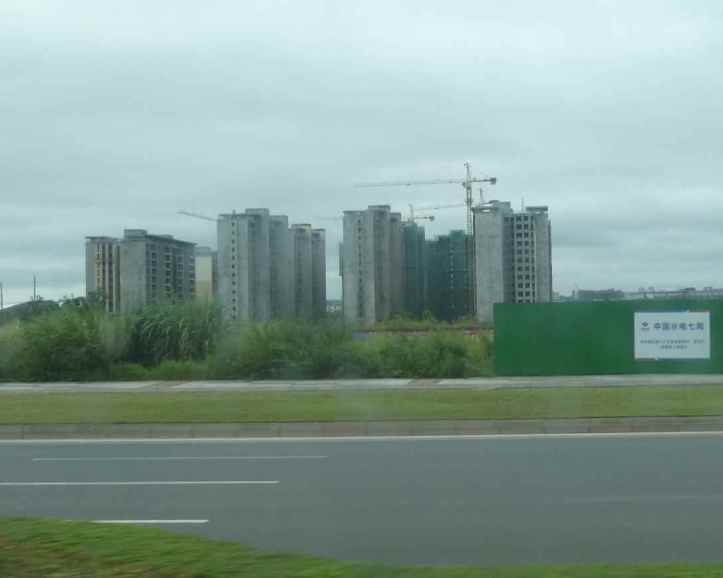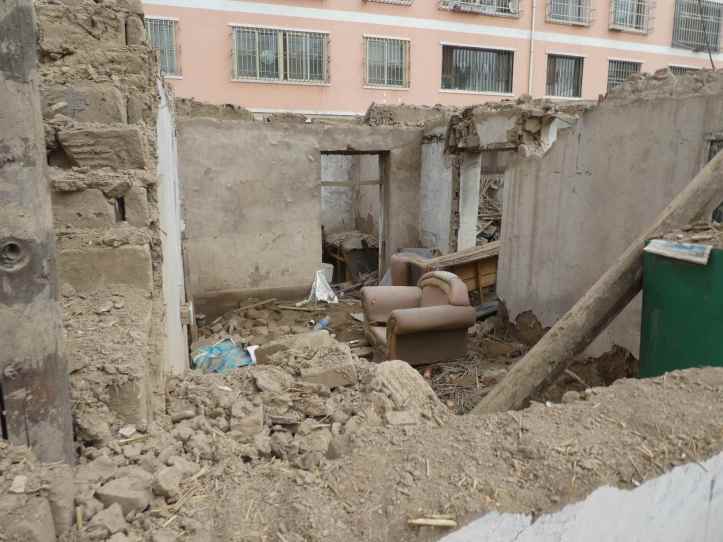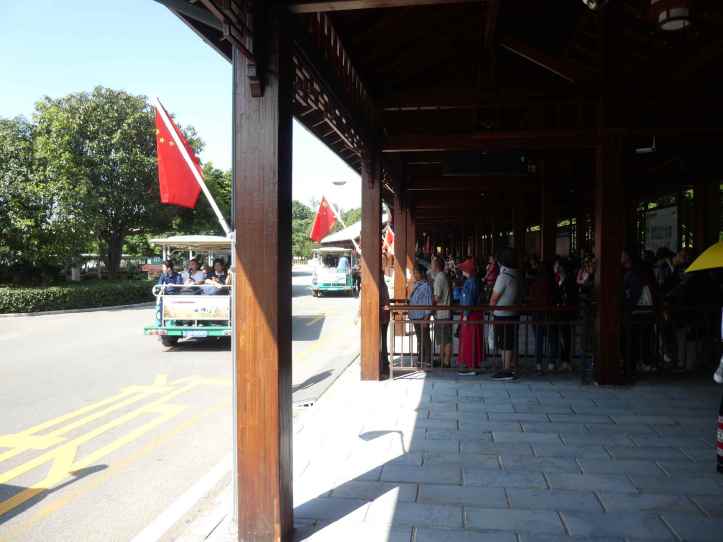There has been an ongoing building boom in China. We witnessed large scale construction projects everywhere we visited.
Residential

There were giant residential projects. In Langzhou I counted 40 fifteen story plus building complexes being constructions within a mile ride.
Every city we were in sported acres of bamboos scaffolding with residential complexes going up. Up and Up. In Zhangye, we staying in five story apartment complex next to an old style neighborhood made of earthen brick interwoven with straw and timber.

The neighborhood was being demolished and new buildings were going up. The construction next to us started at seven am and went until eleven pm on a Friday evening. In Wulingyuen, we saw over 20 new massive Las Vegas like hotels being constructed.
As we drove away from the Great Wall, our guide Lao Sun pointed out residential and hotel complexes being built: “They are building a train station. They are preparing for new arrivals. Those building over there are for government officials or for anyone else who can afford the price tag”
A friend we met in China stated that many of the residential buildings are for show and remain empty. “China is building ghost cities, to show ‘growth'” (The truth about Ghost Cities) (Wiki Link). There was a lot of ongoing construction. A lot of newly built construction (we stayed in one in Hekou). And a lot of half build stuff where work had clearly stopped and the project abandoned.
Is it to show development only or is it a “build it and they will come” strategy?
Michael, someone I met on the train, believed the rural population has no money to move to the city. He believed a lot of the building was to support a growing Chinese population.
Public Works
Giant sections of roads were being repaired or opened to work on the pipes below. New bridges were going up and giant irrigation projects were in the process of being undertaken.
Transportation
On the train I saw a small blurb about: “The alleviation of poverty through transportation.” I looked it up and it is a real policy (Click Here). Throughout the bus rides and stops in various cities, giant railways for bullet trains were being erected. In many cases, the towns were left untouched and giant 30-50 story bridges over the city were being fabricated. In our bus rides through the mountains we saw tunnel after tunnel being constructed to support the trains.
Massive freeways were being constructed in order to link rural municipalities with city centers. This allowed centers to grow outward and rural centers to quickly transport their goods to city centers.
We were in 4 airports, 9 train stations, and 6 bus stations. All but one were new construction or upgraded within 5 years, and some are still undergoing construction.
Subway cars, buses, trains had all been replaced with modern style cars complete with AC, charging stations, and electronic displays, billboards, and scanning technology. Some of the buses we rode had sensors in the seat belts and the percent of the people with seat belt was displayed for the driver and for all to see.

In Kunming, they opened their first metro line in 2012 (Kunming’s Master Plan). They were supposed to be complete with 169 kilometers of line by 2018 (they are not quite done yet, lines 1,2, and 3 are completed, tracks 4, 5, 6 are supposed to open in a year). So in nearly a 10 year period they will have laid 169 kilometers of track. BART by comparison opened in 1972 and as of 2018 has 212 kilometers of track laid. (This might have something to do with ridership. BART boast 126 million riders per year on all lines. While Kunming line 1 has 3.7 million riders per day). Regardless, it is a massive undertaking in such a sort period of time.
Tourism
The alleviation of poverty through toursim is also a real policy (Click here). Aside from the hotels being built, nearly every tourist destination we went to, the entire tourist experience is being upgraded or constructed with the intent of making every aspect more accessible. People movers, people mover stops, eateries, experiences, transportation to and from remote locations has been renovated or is in the process of being developed. We saw this in Wulingyuan (Avatar Moutains), Zhangye (Rainbow Mountains), Shilian (The Stone Forest), and Gubeikou (The Great Wall).

Modern Technology
There has been a massive shift on how things are paid in China. While it is still possible to pay with cash, most pay with a QR (Quick Response) code. I remember trying to program printers to make these things in Silicon Valley in the early 90s.

People pay for food, groceries, with a QR code, and sometimes with cash. In Bejing, I accidentally went into a smart store where this was the only way to buy things. I had to exit and give a stranger money to help buy water for me. People use QR to download maps, directions, product information. They scan their way onto metro’s and buses and use it as a national identification card if stopped by the police. There are a wide array of other tasks for which people used these codes (nice list: Click Here). Getting most people to do a thing is hard, so I was impressed when I thought about the investment and energy it took to get most of the 1.4 billion Chinese to follow a modern practice in relatively a short amount of time. I asked Michael about QR technology. “I think the government likes it more. It can track people’s financial movements easier. Cash is hard to track right?”

Terraforming
In Hong Kong they were filling parts of the bay with fill for new construction.
In Langzhou, the only word that comes to mind is terraforming. Aside from residential construction, giant swaths of land were being converted to amusement parks. Giant mountains of dirt and sand were being removed by trucks, and huge canyons were being cemented and intermittently laced with planted trees and shrubs to control erosion. A giant wetland park was created and is euphemistically referred to as Zhangye’s humidifier. In the whole 90 minute bus ride, there was not a minute of it where new construction was not all around. I asked Michael about these projects, as he was from Langzhou, and he said: “Yeah, it’s crazy there is so much building, I don’t even know what they are doing in that valley,” referring to mountains of dirt being moved out and away.
In all, it reflected a huge amount of investments in public goods, which is part of the reason why Michael stated the new leader of China is so popular.
China opens new Bejing Airport (Click Here)
A list of 30 major Chinese Building projects in the last few years (Click Here)
This is fascinating Dan
LikeLike
Thank you. We build in the US as well. However the scale, magnitude, and the scope of the building in the US is dwarfed by what China is doing. It really made me wonder how different the US would be if government invested as much in infrastructure.
LikeLike